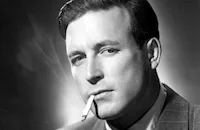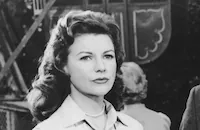It all starts innocently enough. Jimmy, a drunken conventioneer (Ted North), makes the mistake of picking up Steve (Lawrence Tierney), a hitchhiker who has just robbed and murdered a theatre manager. Along their way up the California coast, they soon stop to take on two female hitchhikers; one a tough, calculating blonde, the other, a naive girl with show biz aspirations. When a motorcycle cop tries to stop them for questioning, Steve almost succeeds in crushing him with their car, which sets in motion a frantic manhunt for the unlucky foursome. By this point, Jimmy realizes the terrible predicament he is in. But the situation becomes even more desperate once the fugitives take refuge in an isolated beach house where Steve becomes increasingly paranoid and violent.
Barry Gifford, whose novel Wild at Heart: The Story of Sailor and Lulu became the basis for David Lynch's Wild at Heart (1990), sings the praises of Lawrence Tierney in his book of film reviews, The Devil Thumbs a Ride & Other Unforgettable Films: "This is one of the meanest, most boldly deranged exercises in maniacal behavior this side of Farmer Ed Gein, minus the dismemberment....Tierney invests this basically stupid plot with such genuine virulence that Devil must be ranked in the upper echelon of indelibly American noir."
In an interview for Psychotronic Magazine, Tierney recalled little about the making of The Devil Thumbs a Ride but he did add, "A lot of people like that. I got along with (director) Felix Feist, he was a nice guy. Very talented, a good sense of humor. We used to play gin rummy. I'd beat him most of the time and he got upset because he considered himself a great gin rummy player." Of course, being a cunning card player was not what made Tierney a notorious character within Hollywood circles. His off screen reputation for boozing and brawling was just as unapologetic as the onscreen characters he played. Before he was dropped from his RKO contract, he became a publicist's nightmare with his numerous scrapes with the law; he was charged with breaking a man's jaw, kicking a police officer, and arrested numerous times for drunken and disorderly conduct. After completing Best of the Badmen, his last RKO feature, Tierney made national headlines when he created a major disturbance that sent him, bound in straps on a gurney, to a psychiatric hospital. Although he continued to make films on a sporadic basis, his alcoholic rages continued to end in police court with jail sentences, culminating in a notorious 1975 incident where he was suspected of pushing a female drinking companion to her death. Eventually, Tierney sought help through Alcoholics Anonymous, cleaned up his act, and graduated from appearing in strictly low-budget fare to starring in more mainstream features like Gloria (1980), Arthur (1981), The Naked Gun (1988), and Reservoir Dogs (1992), directed by Quentin Tarantino.
Producer: Herman Schlom
Director: Felix E. Feist
Screenplay: Robert C. DuSoe (novel), Felix E. Feist
Cinematography: J. Roy Hunt
Film Editing: Robert Swink
Original Music: Paul Sawtell
Cast: Lawrence Tierney (Steve Morgan), Ted North (Jimmy 'Fergie' Ferguson), Nan Leslie (Carol Demming), Betty Lawford (Agnes Smith), Andrew Tombes (Joe Brayden).
BW-63m.
by Jeff Stafford



















